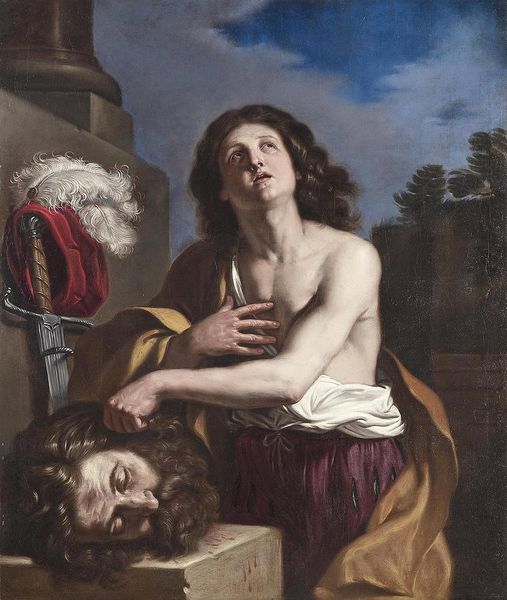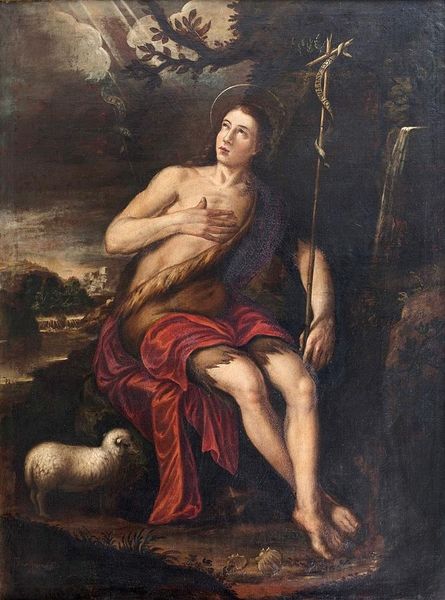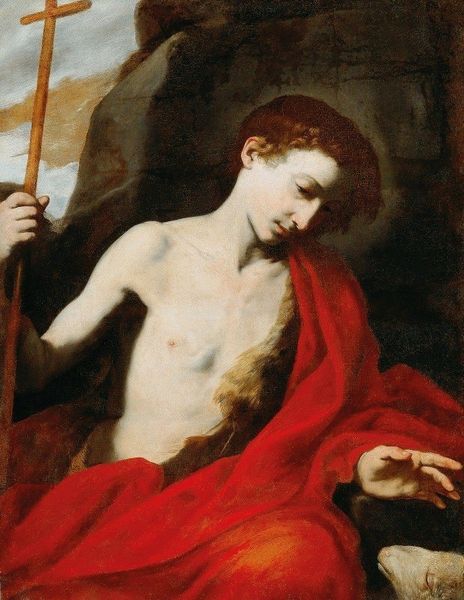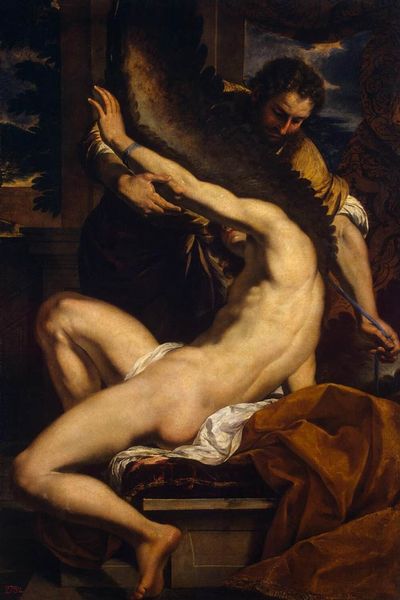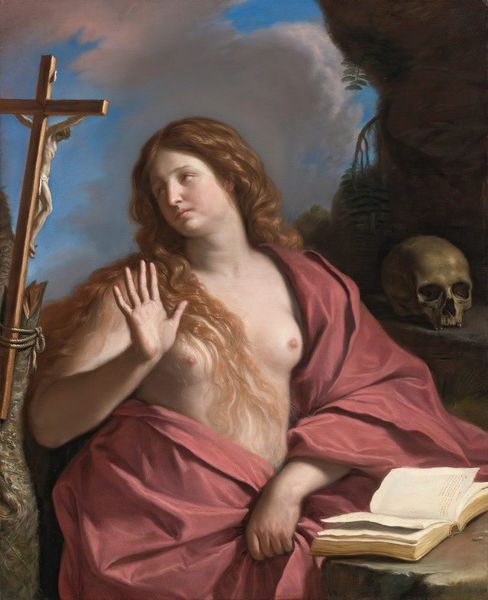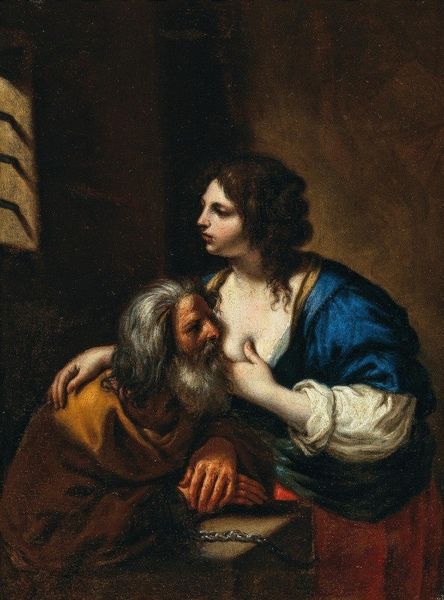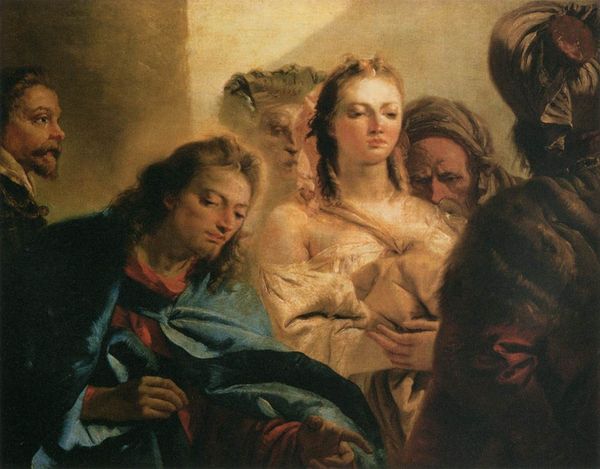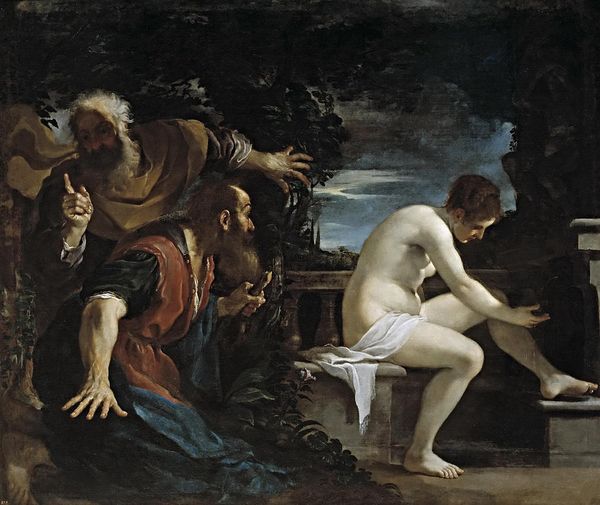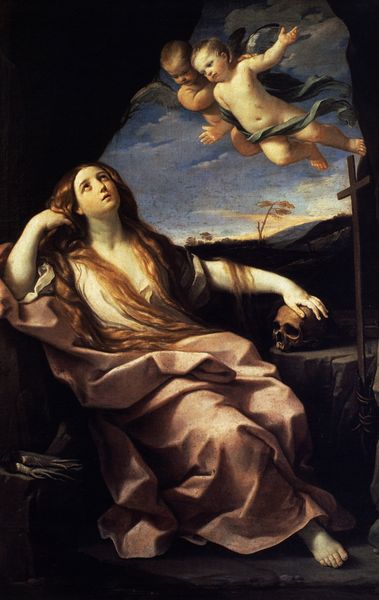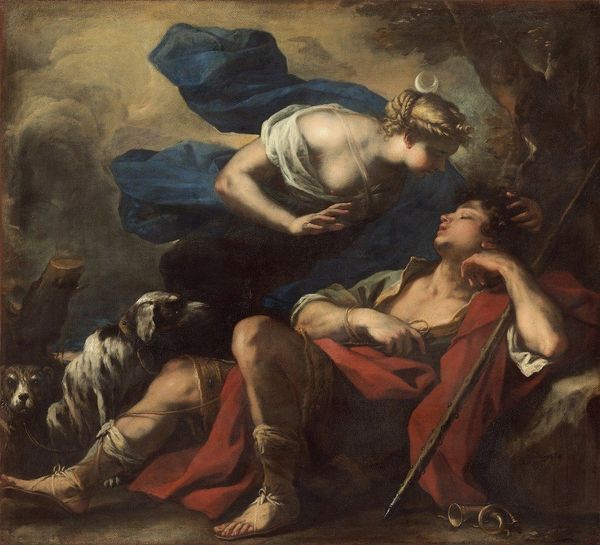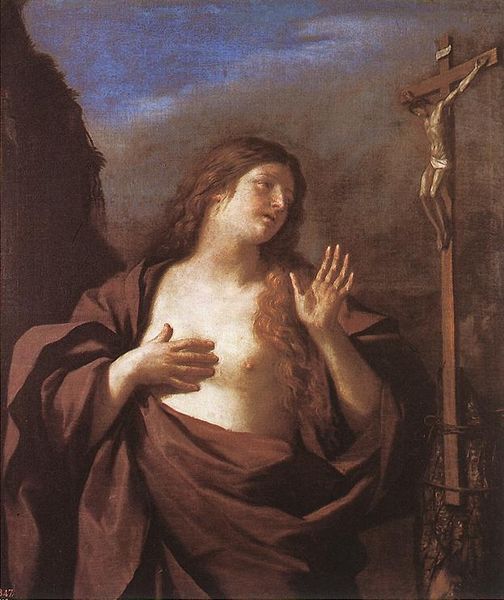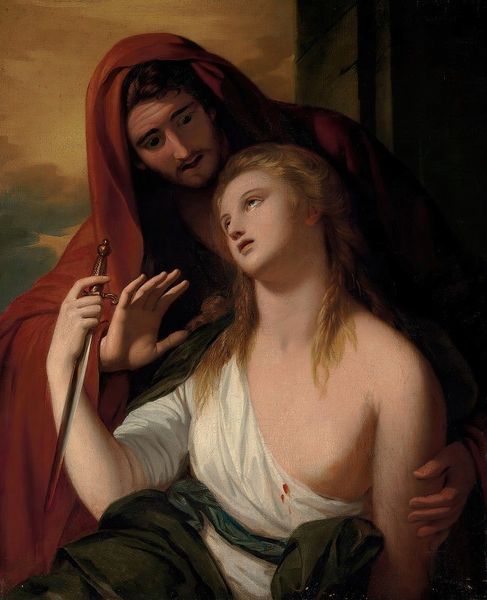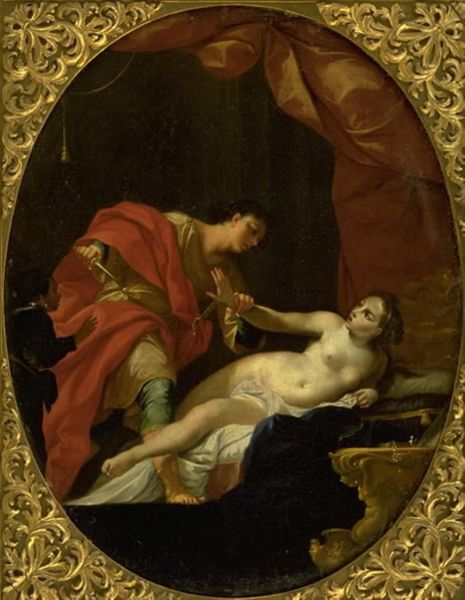
oil-paint
#
portrait
#
allegory
#
baroque
#
oil-paint
#
portrait reference
#
neo expressionist
#
chiaroscuro
#
history-painting
#
italian-renaissance
#
nude
#
portrait art
Copyright: Public Domain: Artvee
Guercino painted David with the Head of Goliath, and here David is shown in the immediate aftermath of his triumph. His thoughtful gaze towards the heavens and his hand placed over his heart, are powerful symbols of humility and divine gratitude. The image of a triumphant hero with the severed head of his defeated foe recurs throughout art history, from ancient Mesopotamia to Renaissance Italy. It represents not only victory, but also the cyclical nature of power and the human capacity for both violence and redemption. Think of Judith Slaying Holofernes by Artemisia Gentileschi. In both works, the act of decapitation carries a raw, visceral charge, engaging viewers on a subconscious level. Consider the head itself, a potent symbol of both life and death. Throughout time, across cultures, the display of heads—shrunken, preserved, or sculpted—has served as a means of asserting dominance and instilling fear. The image resonates with our deepest, most primal fears and desires, reflecting the human psyche's ongoing struggle with mortality and the will to power. It reminds us how symbols evolve, carrying echoes of the past into the present.
Comments
No comments
Be the first to comment and join the conversation on the ultimate creative platform.
